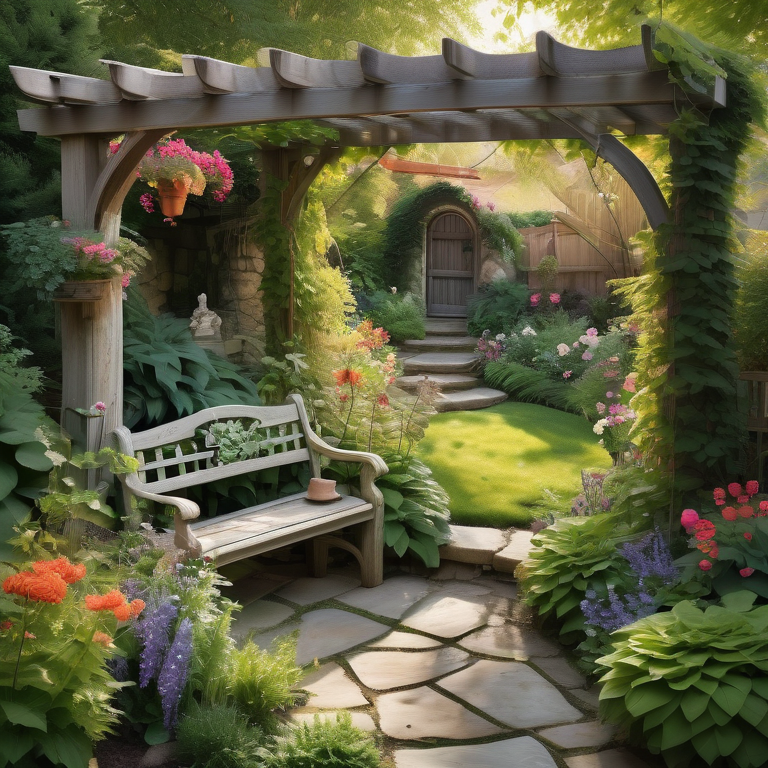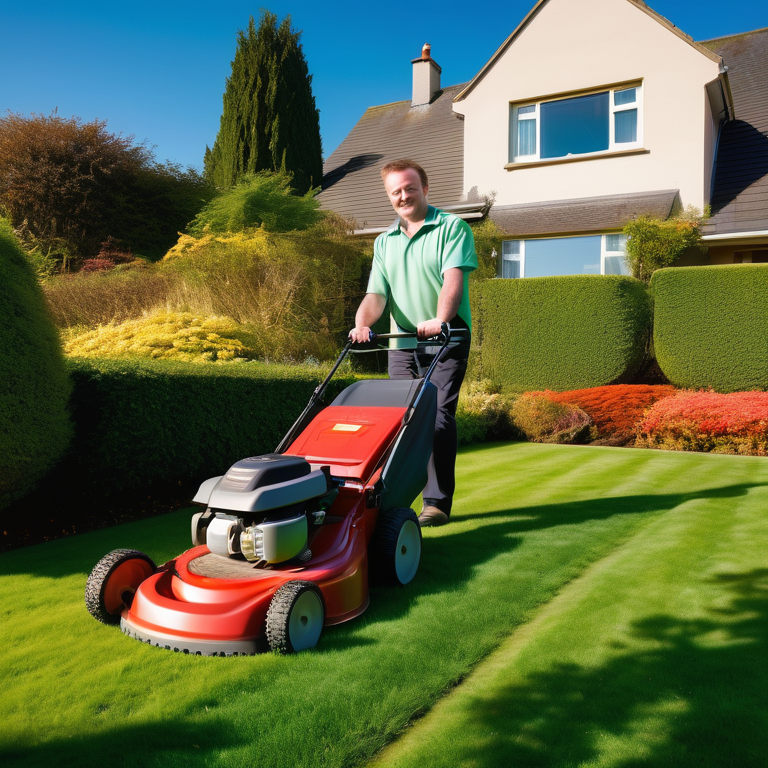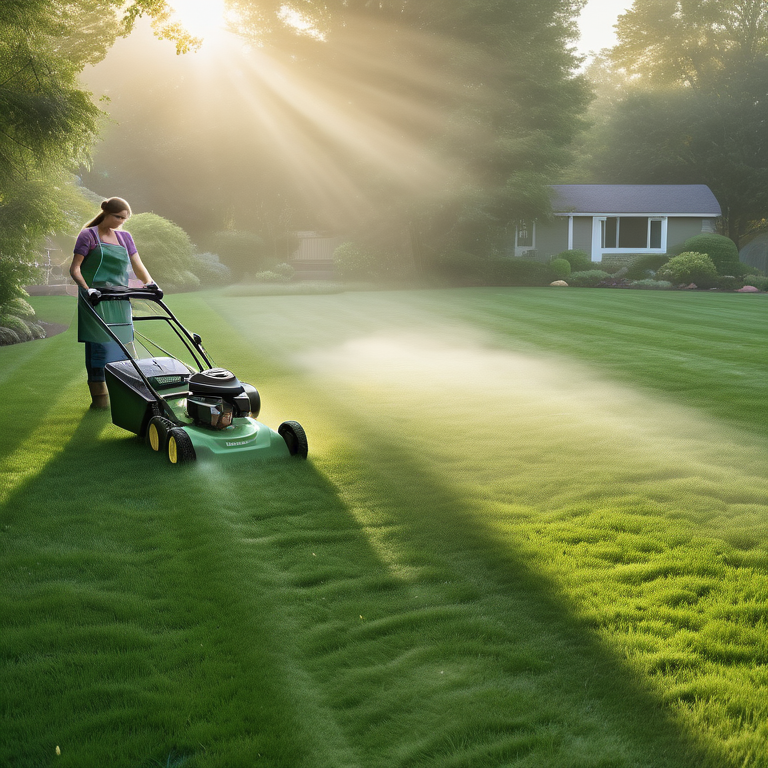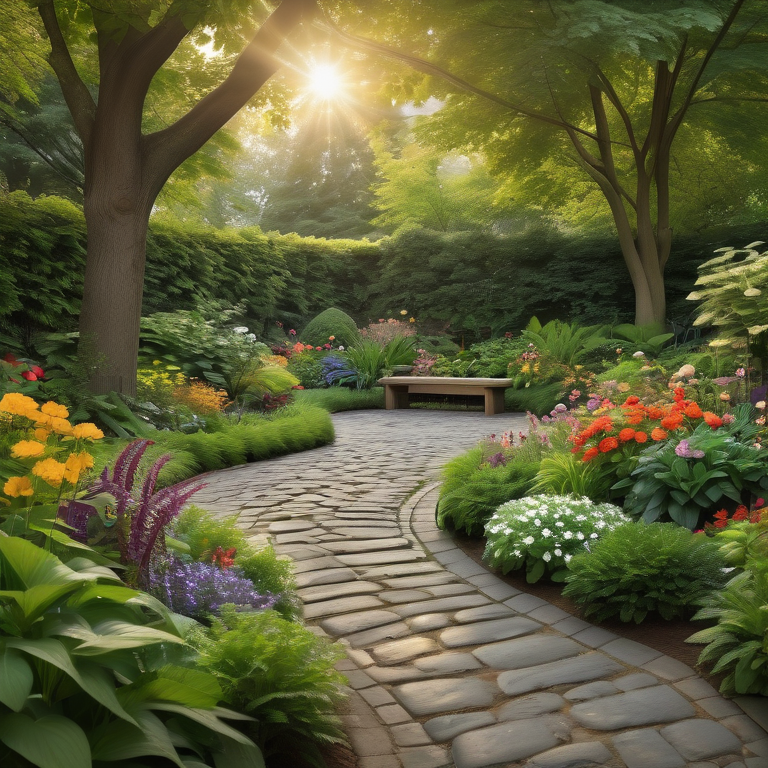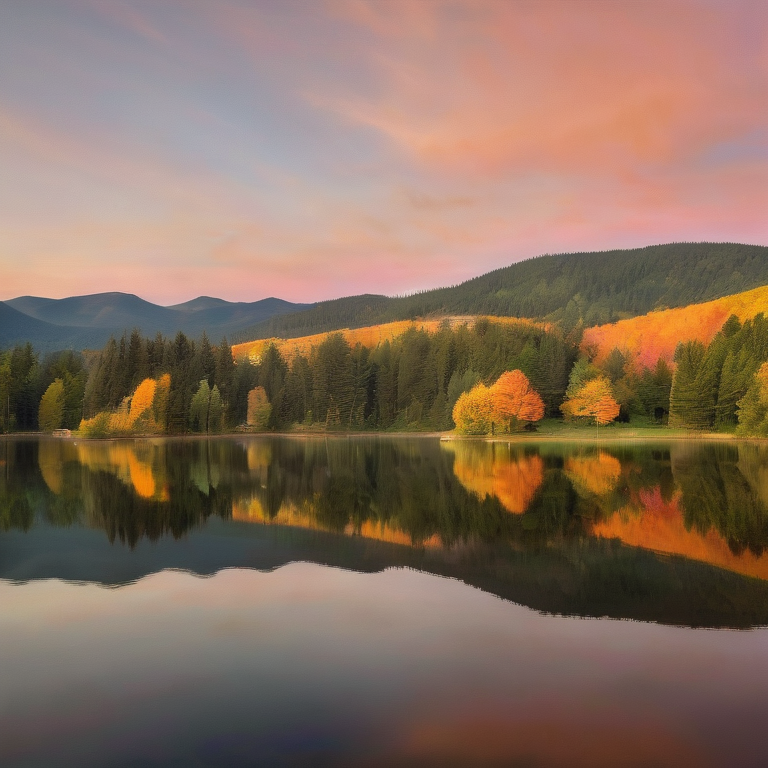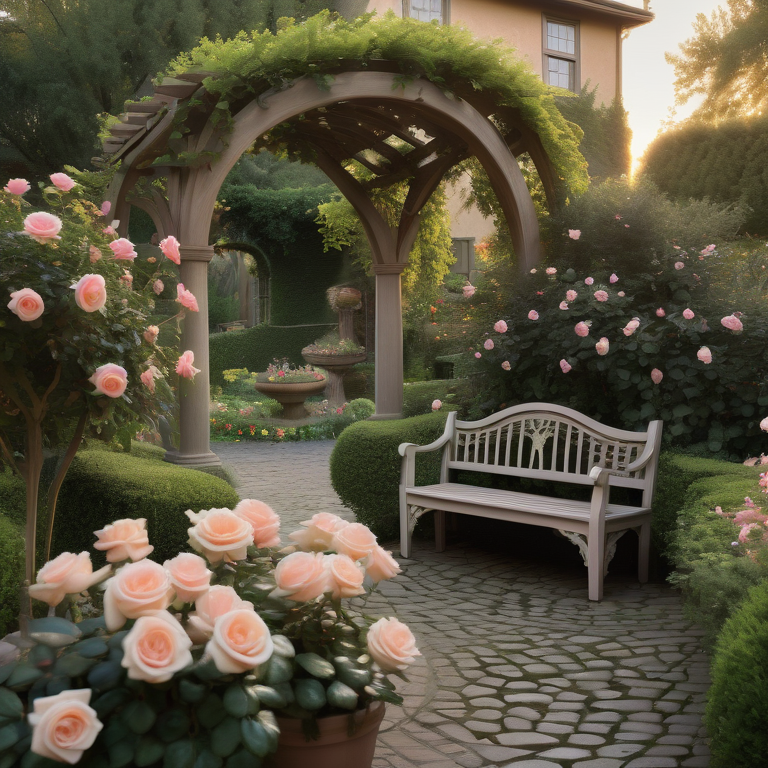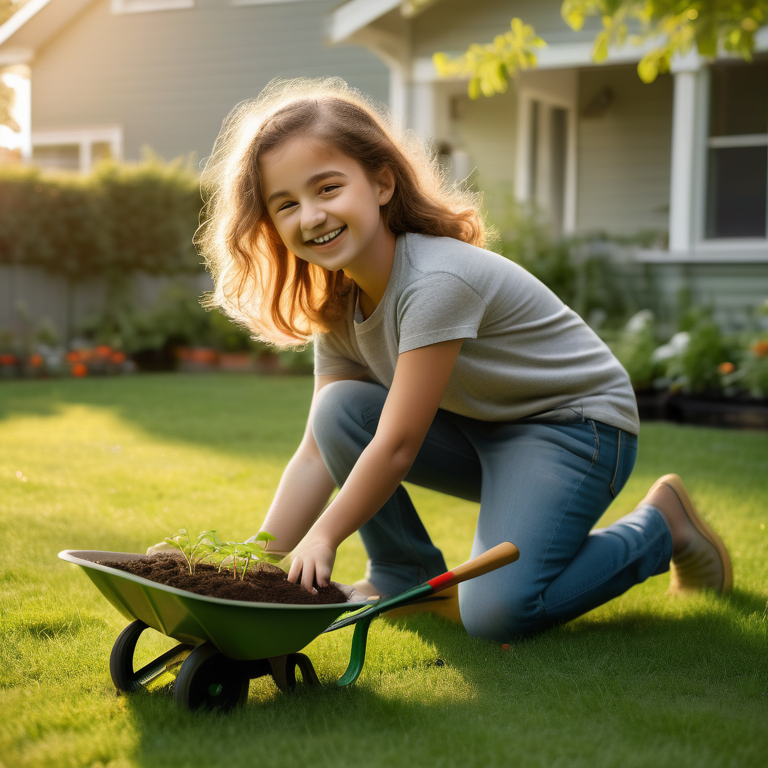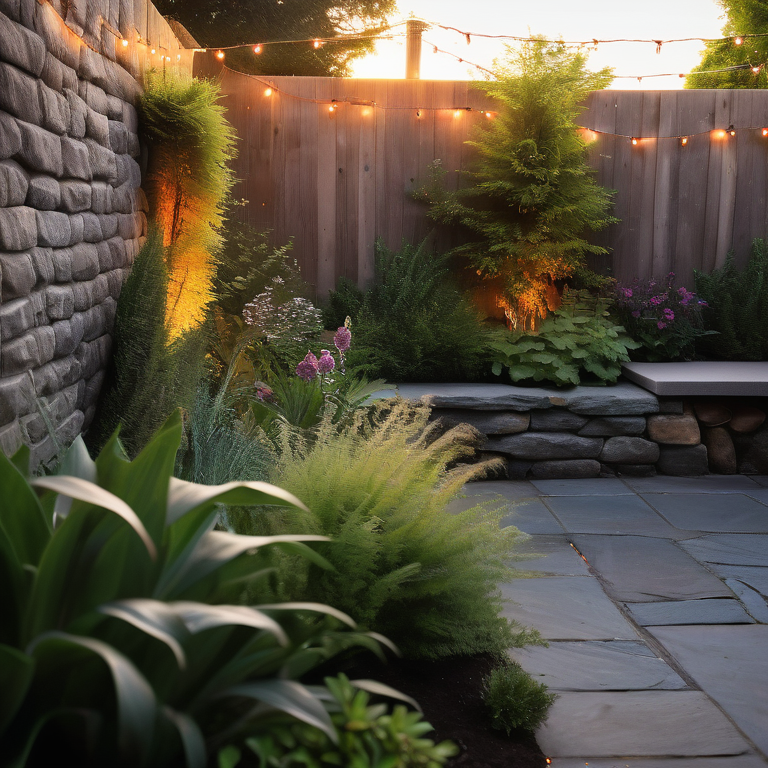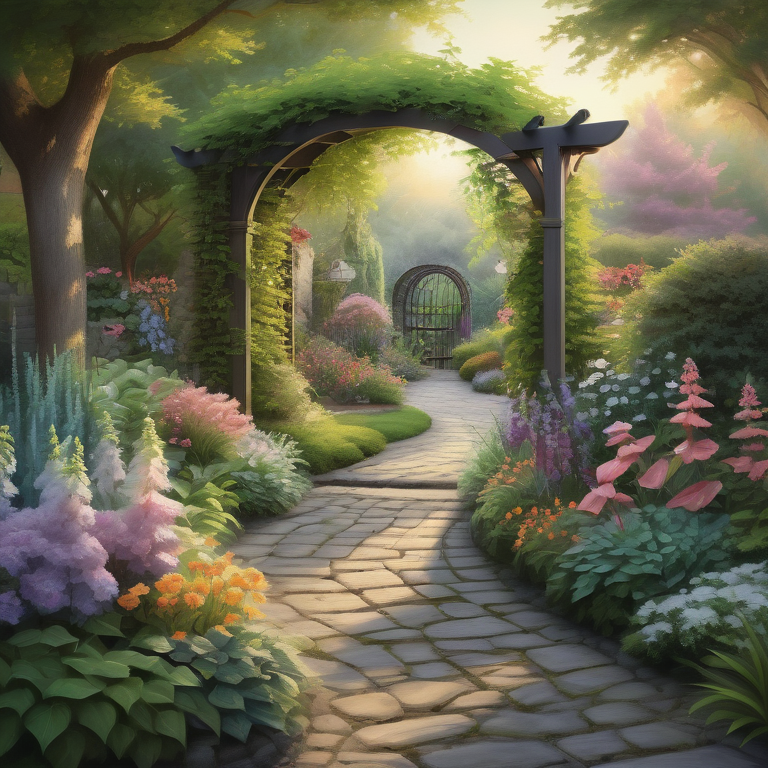Key Highlights
- Garden landscaping is an important aspect of creating a beautiful and functional outdoor space.
- There are various creative ideas for garden landscaping that can transform small spaces, incorporate water features, use sustainable materials, create cozy fire pit areas, add outdoor lighting, design with perennials, build raised beds, implement drought-tolerant landscapes, craft unique walkways, and install privacy fences and living walls.
- Understanding the basics of garden landscaping and the importance of planning are key factors in achieving a successful garden design.
- Enhancing the garden’s aesthetic can be done through selecting the right plant varieties and incorporating texture and color into the design.
- Practical tips for garden maintenance, such as seasonal care and efficient irrigation systems, are also essential for keeping the garden in good condition.
- Innovative solutions for small gardens, such as making the most of limited space and utilizing container gardening, can help create a beautiful and functional outdoor area.
- Encouraging biodiversity in the garden by attracting pollinators with native plants and creating habitats for wildlife is important for creating a thriving ecosystem.
- FAQs about starting garden landscaping with no experience, choosing low-maintenance plants, selecting a landscaping style, increasing property value, and avoiding common DIY mistakes are also addressed.
- Concluding the blog with a summary of the key takeaways and the importance of garden landscaping.
Introduction
Designing or redesigning an outdoor space can be both exciting and overwhelming. To make the process easier, it’s important to explore the possibilities of garden landscaping. Garden landscaping is at the heart of most garden ideas and plays a crucial role in creating an attractive and functional space. By understanding the best time to approach garden landscaping, you can create your dream garden with ease.
Landscape design is the outdoor version of interior design, but with different materials. It involves making changes to the outdoor space, such as creating new plant beds, building walls, or terraces. Both the hard landscaping (such as materials and finishes) and the soft landscaping (such as plants) need to be carefully designed to be both functional and beautiful. Designers work closely with landscaping contractors to bring these ideas to life.
Garden landscaping offers endless possibilities for creating a space that suits your needs and preferences. Whether you want to transform a small space, incorporate water features, use sustainable materials, create cozy fire pit areas, add outdoor lighting, design with perennials, build raised beds, implement drought-tolerant landscapes, craft unique walkways, or install privacy fences and living walls, there are plenty of creative ideas to choose from. The key is to plan your garden landscaping project carefully and consider factors such as the size and shape of your garden, the style of your home, and the desired functionality of the space.
10 Creative Ideas for Garden Landscaping
When it comes to garden landscaping, there are countless creative ideas to explore. These ideas can help transform your outdoor space into a beautiful and functional area. From maximizing small spaces with vertical gardens to incorporating water features for a serene atmosphere, there are options for every garden design. Using sustainable materials for eco-friendly designs, creating cozy fire pit areas for evening gatherings, adding outdoor lighting for enhanced ambiance, designing with perennials for year-round color, building raised beds for efficient gardening, implementing drought-tolerant landscapes, crafting unique walkways with pavers and stones, and installing privacy fences and living walls are all great ways to enhance your back garden. These ideas not only add beauty to your garden but also provide practical solutions for different needs and preferences. Let’s explore these creative ideas in more detail. www.wicklowlandscaping.ie
1. Transforming Small Spaces with Vertical Gardens
If you have a small garden or limited outdoor space, don’t worry! You can still create a stunning garden by utilizing vertical gardening techniques. Vertical gardens are a great way to maximize space and add visual interest to your garden. By utilizing different levels, you can create a multi-dimensional garden that is both functional and beautiful. One popular way to achieve this is by using planters or containers that can be stacked or hung on walls or fences. Another option is to create living walls by using climbing plants such as verbena bonariensis or installing trellises for them to grow on. These vertical gardens not only add greenery to your space but also create a unique and eye-catching focal point. They are perfect for growing herbs, flowers, or even vegetables in a small space. So, if you’re looking to make the most of your small garden, consider transforming it with vertical gardens. www.wicklowlandscaping.ie
2. Incorporating Water Features for a Serene Atmosphere
Water features are a great way to add a sense of tranquility and serenity to your garden. The sound of flowing water can create a soothing ambiance and make your outdoor space feel like a peaceful oasis. There are many options when it comes to incorporating water features into your garden landscaping. You can choose from a variety of options such as fountains, ponds, waterfalls, or even a simple birdbath. These water features not only provide a visual focal point but also attract birds and other wildlife to your garden. They can be placed strategically to create a calming atmosphere and can be enjoyed throughout the year. Whether you have a large garden or a small patio, adding a water feature can transform your outdoor space into a peaceful retreat. www.wicklowlandscaping.ie
3. Using Sustainable Materials for Eco-Friendly Designs
Incorporating sustainable materials into your garden landscaping is not only good for the environment but also adds a unique and eco-friendly touch to your outdoor space. There are various sustainable materials that you can use, such as reclaimed wood, recycled plastic, or natural stone. These materials not only reduce waste but also have a lower impact on the environment compared to traditional materials. Additionally, using sustainable materials can add character and charm to your garden design. Whether you’re building raised beds, installing pathways, or creating seating areas, consider using sustainable materials to create an eco-friendly garden that you can enjoy for years to come. www.wicklowlandscaping.ie
4. Creating Cozy Fire Pit Areas for Evening Gatherings
Creating a cozy fire pit area in your garden is a great way to extend your outdoor living space and create a gathering spot for evening get-togethers. A fire pit provides warmth, ambiance, and a focal point for your outdoor area. Here are some tips for creating a cozy fire pit area:
- Choose a safe and suitable location for your fire pit, away from any flammable materials and at a comfortable distance from seating areas.
- Select a fire pit design that suits your style and fits well with your garden landscaping.
- Surround the fire pit with comfortable seating options such as chairs, benches, or even outdoor sofas.
- Enhance the ambiance by adding string lights or lanterns around the fire pit area.
With a cozy fire pit area, you can enjoy evenings outdoors and create lasting memories with family and friends.
5. Adding Outdoor Lighting for Enhanced Ambiance
Outdoor lighting can transform your garden into a magical and enchanting space, making it perfect for evening gatherings or simply enjoying the outdoors after dark. There are various options when it comes to outdoor lighting, from traditional lanterns and string lights to modern LED fixtures. Here are a few ideas for adding outdoor lighting to enhance your garden’s ambiance:
- Install string lights or fairy lights along fences, pergolas, or trees to create a warm and inviting atmosphere.
- Use spotlights to highlight specific features of your garden, such as trees, sculptures, or water features.
- Incorporate solar-powered lights to save energy and create an eco-friendly lighting solution.
- Consider using color-changing LED lights for a more vibrant and playful effect.
By adding outdoor lighting to your garden, you can create a welcoming and magical atmosphere that can be enjoyed day and night.
6. Designing with Perennials for Year-Round Color
Designing with perennials is a great way to add color and interest to your garden all year round. Perennials are plants that come back year after year, and they can provide a stunning display of flowers and foliage throughout the seasons. Here are some tips for designing with perennials:
- Choose a variety of perennials that bloom at different times of the year to ensure year-round color in your garden.
- Consider the height and spread of each perennial when planning their placement in your garden. This will help create a balanced and visually appealing design.
- Use perennials to create focal points or accents along garden paths or borders.
- Incorporate a mix of perennials with different textures and colors to add depth and interest to your garden.
By designing with perennials, you can create a vibrant and ever-changing garden that will delight you throughout the year. www.wicklowlandscaping.ie
7. Building Raised Beds for Efficient Gardening
Building raised beds is a practical and efficient way to garden, especially if you have limited space or poor soil quality. Raised beds not only provide better drainage and aeration for plants but also make gardening more accessible and easier to maintain. Here are some benefits and tips for building raised beds:
- Raised beds provide better control over soil quality and fertility, allowing you to create optimal conditions for your plants.
- They can be built at different levels, creating visual interest and adding dimension to your garden design.
- Raised beds can be made from a variety of materials, such as wood, stone, or recycled plastic. Choose a material that suits your style and budget.
- Consider the height and width of the raised beds to ensure easy access for planting, watering, and maintenance.
Building raised beds in your garden can maximize your planting space and make gardening more efficient and enjoyable.
8. Implementing Drought-Tolerant Landscapes
Implementing drought-tolerant landscapes is not only a practical choice for water conservation but also a great way to create an attractive and low-maintenance garden. Drought-tolerant plants are adapted to survive in dry conditions and require minimal watering once established. Here are some tips for implementing drought-tolerant landscapes:
- Choose plants that are native to your region and are adapted to the local climate and soil conditions.
- Group plants with similar water needs together to create efficient irrigation zones.
- Incorporate mulch around plants to conserve moisture and suppress weed growth.
- Install a drip irrigation system to provide targeted watering to each plant.
By implementing drought-tolerant landscapes, you can create a beautiful and sustainable garden that requires less water and maintenance.
9. Crafting Unique Walkways with Pavers and Stones
Crafting unique walkways in your garden can add style and functionality to your outdoor space. Pavers and stones are great options for creating walkways that are both practical and visually appealing. Here are some ideas for crafting unique walkways:
- Use different shapes, colors, and sizes of pavers or stones to create interesting patterns or designs.
- Incorporate stepping stones or gravel paths for a natural and rustic look.
- Consider using recycled materials or reclaimed bricks for an eco-friendly and unique touch.
- Add lighting along the walkways to enhance safety and create an enchanting atmosphere.
By crafting unique walkways with pavers and stones, you can create a stunning and inviting garden that is a pleasure to explore. www.wicklowlandscaping.ie
10. Installing Privacy Fences and Living Walls
Installing privacy fences and living walls in your garden can create a sense of seclusion and add privacy to your outdoor space. Privacy fences can be made from a variety of materials, such as wood, bamboo, or vinyl, and can be customized to suit your style and needs. Living walls, also known as green walls, are vertical gardens that can be created by installing plants on a wall or fence. They not only provide privacy but also add beauty and a sense of nature to your garden. Whether you choose a privacy fence or a living wall, these features can create a private oasis where you can relax and enjoy your garden in peace.
Key Takeaways on Garden Landscaping
Garden landscaping is an important aspect of creating a beautiful and functional outdoor space. By incorporating creative ideas and utilizing different techniques, you can transform your garden into a stunning and inviting area. Whether you have a small space or a large garden, there are options for every design style and preference. Understanding the basics of garden landscaping and the importance of planning are crucial for achieving a successful garden design. Enhancing the garden’s aesthetic can be done through selecting the right plant varieties and incorporating texture and color into the design, as well as sprucing up the front gate to add impact to the front garden. Practical tips for garden maintenance, such as seasonal care and efficient irrigation systems, are also essential for keeping the garden in good condition. www.wicklowlandscaping.ie
Understanding the Basics of Garden Landscaping
To create a successful garden design, it’s essential to understand the basics of garden landscaping. Garden landscaping involves making changes to your outdoor space, such as creating new plant beds, building walls, or terraces. Both the hard landscaping (such as materials and finishes) and the soft landscaping (such as plants) need to be carefully designed to be both functional and beautiful. Designers work closely with landscaping contractors to bring these ideas to life. Planning is an important part of garden landscaping and involves considering factors such as the size and shape of your garden, the style of your home, and the desired functionality of the space. By understanding the basics of garden landscaping, you can create a garden that suits your needs and preferences.
The Importance of Planning Your Landscape Design
Planning is a crucial step in the garden landscaping process. It involves considering various factors and making decisions about the design and layout of your outdoor space. By planning your landscape design, you can ensure that your garden is both functional and beautiful. Some important aspects to consider during the planning phase include:
- Assessing the size and shape of your garden and considering any existing features or structures.
- Identifying your needs and preferences for the garden, such as seating areas, play areas, or space for entertaining.
- Considering the style and architecture of your home and how it can be reflected in the garden design.
- Selecting suitable plants and materials based on your climate, soil conditions, and maintenance preferences.
- Creating a budget and timeline for your garden landscaping project.
By taking the time to plan your landscape design, you can create a garden that is tailored to your specific needs and preferences. www.wicklowlandscaping.ie
Enhancing Your Garden’s Aesthetic
Enhancing your garden’s aesthetic involves adding visual interest and beauty to your outdoor space. There are various ways to achieve this, such as creating attractive flower beds filled with a variety of cut flowers, including perennials, annuals, and bulbs, to add color and texture. Lawn edging can be done with materials such as bricks, stones, or metal, to create clean lines and separate different areas of the garden. By enhancing your garden’s aesthetic, you can create a visually appealing and inviting outdoor area.
Selecting the Right Plant Varieties
Selecting the right plant varieties is essential for creating a successful garden. Different plants have different light, soil, and water requirements, so it’s important to choose varieties that will thrive in your specific garden conditions. Consider factors such as the amount of sunlight your garden receives throughout the day and whether it is full sun or partial sun. Some plants prefer full sun and thrive in direct sunlight for several hours a day, while others prefer partial sun and can tolerate some shade. Consult gardening resources or speak to experts at your local garden center to determine which plant varieties are best suited for your garden’s specific conditions. By selecting the right plant varieties, you can ensure that your garden thrives and looks beautiful throughout the year. www.wicklowlandscaping.ie
The Role of Texture and Color in Design
Texture and color play important roles in garden design and can greatly impact the overall look and feel of your outdoor space. Texture refers to the visual and tactile qualities of plants and materials in the garden. By incorporating a mix of plants with different leaf shapes, sizes, and textures, you can add depth and interest to your garden. Color is another important aspect of garden design and can evoke different emotions and moods. Consider using a color scheme that complements your home’s architecture and the surrounding landscape. By incorporating texture and color into your garden design, you can create a visually stunning and cohesive outdoor space. www.wicklowlandscaping.ie
Practical Tips for Garden Maintenance
Maintaining your garden is essential for keeping it healthy and looking its best. Here are some practical tips for garden maintenance:
- Perform regular weeding to keep your garden beds free from unwanted plants.
- Prune and trim plants as needed to maintain their shape and promote healthy growth.
- Provide seasonal care, such as fertilizing, mulching, and watering, to ensure the optimal health of your plants.
- Install an efficient irrigation system, such as drip irrigation, to provide targeted and efficient watering.
- Inspect and address any pest or disease issues promptly to prevent further damage to your garden.
By following these practical tips for garden maintenance, you can ensure that your garden remains vibrant and beautiful throughout the year.
Seasonal Care for Your Garden
Providing seasonal care for your garden is crucial for its health and vitality. Different seasons require different care, so it’s important to understand the needs of your plants throughout the year. Here are some general tips for seasonal care:
- Spring: Clear away any debris, prune shrubs and trees, and start planting annuals and perennials.
- Summer: Water regularly, mulch to conserve moisture, and deadhead flowers to promote continuous blooming.
- Fall: Clean up fallen leaves, plant bulbs for spring bloom, and prepare your garden for winter.
- Winter: Protect plants from frost and extreme temperatures, prune dormant trees and shrubs, and plan for the upcoming gardening season.
By providing seasonal care at the appropriate times, you can ensure that your garden remains healthy and beautiful year-round.
Efficient Irrigation Systems for Water Conservation
Efficient irrigation systems are essential for conserving water in your garden and reducing water waste. There are various options for efficient irrigation systems, each with its own benefits and considerations. Here are some examples:
- Drip Irrigation: Delivers water directly to the root zone of plants, minimizing evaporation and water waste. It can be customized to individual plant needs and is ideal for garden beds and containers.
- Sprinkler Systems: Use sprinkler heads to evenly distribute water over a designated area. Choose sprinkler heads that provide even coverage and adjustable settings to avoid overspray.
- Rainwater Harvesting: Collect rainwater from gutters and downspouts into a storage tank for later use in the garden. This system can be combined with drip irrigation or sprinkler systems.
- Smart Irrigation Controllers: Use weather data and soil moisture sensors to automatically adjust watering schedules and avoid overwatering.
By implementing efficient irrigation systems, you can reduce water consumption in your garden and contribute to water conservation efforts.
|
Efficient Irrigation System |
Benefits |
|
Drip Irrigation |
Provides targeted watering, reduces water waste, ideal for garden beds and containers |
|
Sprinkler Systems |
Evenly distributes water, adjustable settings, avoid overspray |
|
Rainwater Harvesting |
Collects rainwater for later use, reduces reliance on municipal water supply |
|
Smart Irrigation Controllers |
Adjusts watering schedules based on weather and soil moisture, avoids overwatering |
Innovative Solutions for Small Gardens
Having a small garden doesn’t mean sacrificing beauty and functionality. There are innovative solutions for small gardens that can maximize space and create a stunning outdoor area. Container gardening is a great option for small gardens, as it allows you to grow plants in pots or containers, making the most of limited garden space. By using vertical gardening techniques, such as wall-mounted planters or hanging baskets, you can create a multi-dimensional garden that adds visual interest. Additionally, by utilizing different areas of the garden, such as creating seating areas or small planting zones, you can make the most of your small garden and create a unique and inviting outdoor space.
Making the Most of Limited Space
When you have limited space in your garden, it’s important to make the most of every inch. Here are some tips for making the most of limited space in your small garden:
- Utilize vertical space by installing wall-mounted planters or hanging baskets.
- Create different areas in your garden, such as a seating area, a small dining area, or a reading nook, to maximize functionality.
- Use multifunctional furniture, such as benches with built-in storage or compact dining sets.
- Opt for compact and dwarf varieties of plants that are suited for small spaces.
- Consider using mirrors or reflective surfaces to create the illusion of a larger space.
By being creative and utilizing different areas of your small garden, you can create a functional and beautiful outdoor space that feels larger than it actually is.
Creative Container Gardening Ideas
Container gardening is a versatile and creative way to garden, especially in small spaces or areas with limited soil access. Here are some ideas for creative container gardening:
- Use different sizes and types of containers to create visual interest and accommodate different plant sizes.
- Create a vertical garden by stacking containers or using wall-mounted planters.
- Mix and match plants with different textures, colors, and sizes for a vibrant and dynamic container display.
- Experiment with different materials for containers, such as terracotta, ceramic, metal, or recycled materials.
- Consider using hanging baskets or window boxes to maximize vertical space.
By thinking outside the box and getting creative with your container gardening, you can create a stunning and unique garden display even in the smallest of spaces. www.wicklowlandscaping.ie
Encouraging Biodiversity in Your Garden
Encouraging biodiversity in your garden is not only beneficial for the environment but also creates a thriving ecosystem that supports a variety of plants and wildlife. Native plants are key to attracting pollinators, such as bees and butterflies, and creating habitats for birds and other small animals. By incorporating a mix of native plants, you can provide food and shelter for a range of species. Additionally, creating wildlife habitats, such as birdhouses, bat boxes, or insect hotels, can further enhance biodiversity in your garden. By encouraging biodiversity, you can make a positive impact on the local ecosystem and enjoy the beauty of a diverse and thriving garden.
Attracting Pollinators with Native Plants
Attracting pollinators to your garden is not only beneficial for the plants but also adds vibrancy and life to your outdoor space. Native plants are the best choice for attracting pollinators, as they have evolved alongside local insects and provide the necessary nectar and pollen for their survival. By planting a variety of native flowers, such as bee balm, coneflowers, and milkweed, you can create a pollinator-friendly garden that is a haven for bees, butterflies, and other beneficial insects. Avoid using pesticides or herbicides in your garden, as these can harm pollinators. By attracting pollinators with native plants, you can create a thriving and biodiverse garden that supports the local ecosystem.
Creating Habitats for Wildlife
Creating habitats for wildlife in your garden is a great way to promote biodiversity and support local ecosystems. There are various ways to create habitats for wildlife, such as providing food sources, water sources, and shelter. Here are some ideas for creating wildlife habitats in your garden:
- Plant native flowers, shrubs, and trees that provide food and nectar for birds, butterflies, and other wildlife.
- Create a small pond or water feature to attract frogs, toads, and other aquatic wildlife.
- Install bird feeders, birdhouses, and bat boxes to provide food and shelter for birds and bats.
- Leave areas of your garden wild or create brush piles to provide shelter for small mammals and insects.
By creating habitats for wildlife in your garden, you can promote biodiversity and create a thriving and balanced ecosystem. www.wicklowlandscaping.ie
Conclusion
Garden landscaping offers a canvas for creativity and serenity in your outdoor space. Incorporating elements like vertical gardens, water features, and eco-friendly designs can transform your garden into a tranquil oasis. From cozy fire pit areas to efficient raised beds, each idea adds a unique touch to your landscape. Understanding plant varieties, color schemes, and maintenance tips are key to sustaining a vibrant garden. Embrace innovative solutions for small spaces and encourage biodiversity to attract wildlife. Whether you’re a novice or seasoned gardener, these ideas will enhance your outdoor living experience and elevate your property’s value. Start planning your dream garden today! www.wicklowlandscaping.ie
Frequently Asked Questions
How Can I Start Landscaping My Garden with No Experience?
Starting to landscape your garden with no experience can be daunting, but it’s not impossible. Here are a few tips to get started:
- Research and gather inspiration from books, magazines, and online resources.
- Start small and focus on one area at a time.
- Consult with professionals or take gardening classes to learn the basics.
With time and practice, you can develop your landscaping skills and create a beautiful garden that reflects your vision.
What Are the Best Low-Maintenance Plants for Landscaping?
There are many low-maintenance plants that are perfect for landscaping. Some popular options include succulents, ornamental grasses, lavender, and yarrow. These plants require minimal watering, pruning, and fertilizing, making them ideal for busy gardeners or those with limited time for maintenance.
How Do I Choose a Landscaping Style That Suits My Home?
When choosing a landscaping style that suits your home, consider factors such as the architecture, location, and size of your home. Research different styles, such as formal, cottage, or modern, and choose one that complements your home’s aesthetic and suits your outdoor space and garden ideas.
Can Garden Landscaping Increase Property Value?
Well-designed and maintained garden landscaping can enhance the curb appeal of your property and increase its market value. A beautiful outdoor area with attractive landscaping features, such as gardens, patios, or water features, can attract potential buyers and make your property more desirable.
What Are the Most Common Mistakes in DIY Garden Landscaping?
Some common mistakes in DIY garden landscaping include improper planning, lack of knowledge about plant requirements, and failure to consider long-term maintenance. It’s important to do thorough research, plan your design, and seek professional advice when needed to avoid costly mistakes.

